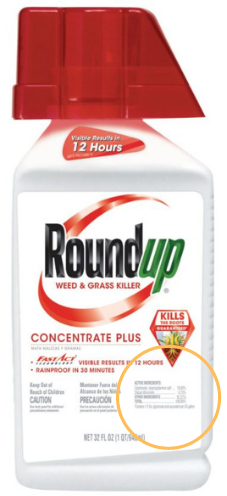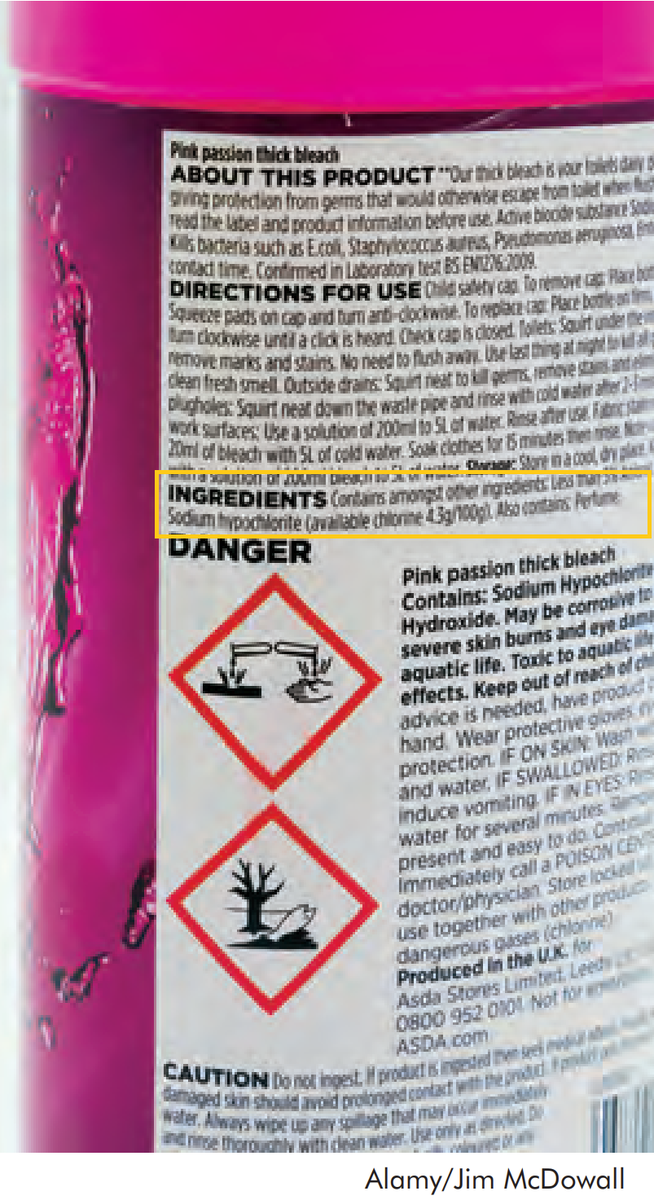Gateway on Pesticide Hazards and Safe Pest Management
How To Find Ingredients in Pesticide Products
Beyond Pesticides offers resources below to evaluate the health and ecological effects of specific chemical exposure from ACTIVE INGREDIENTS in pesticide products, as well as regulatory information and supporting scientific documents. Because various pesticide products can contain more than one active ingredient, it is important to READ the LABEL to determine chemical components.
With 192 different active ingredients and counting, it is essential to establish the connection between the use of these chemicals and their respective hazards.
View the step-by-step guide on how to search for the active ingredient(s) in pesticide products below:
- Go to U.S. EPA's Pesticide Product and Label System and enter the product name. The generic product name may vary.
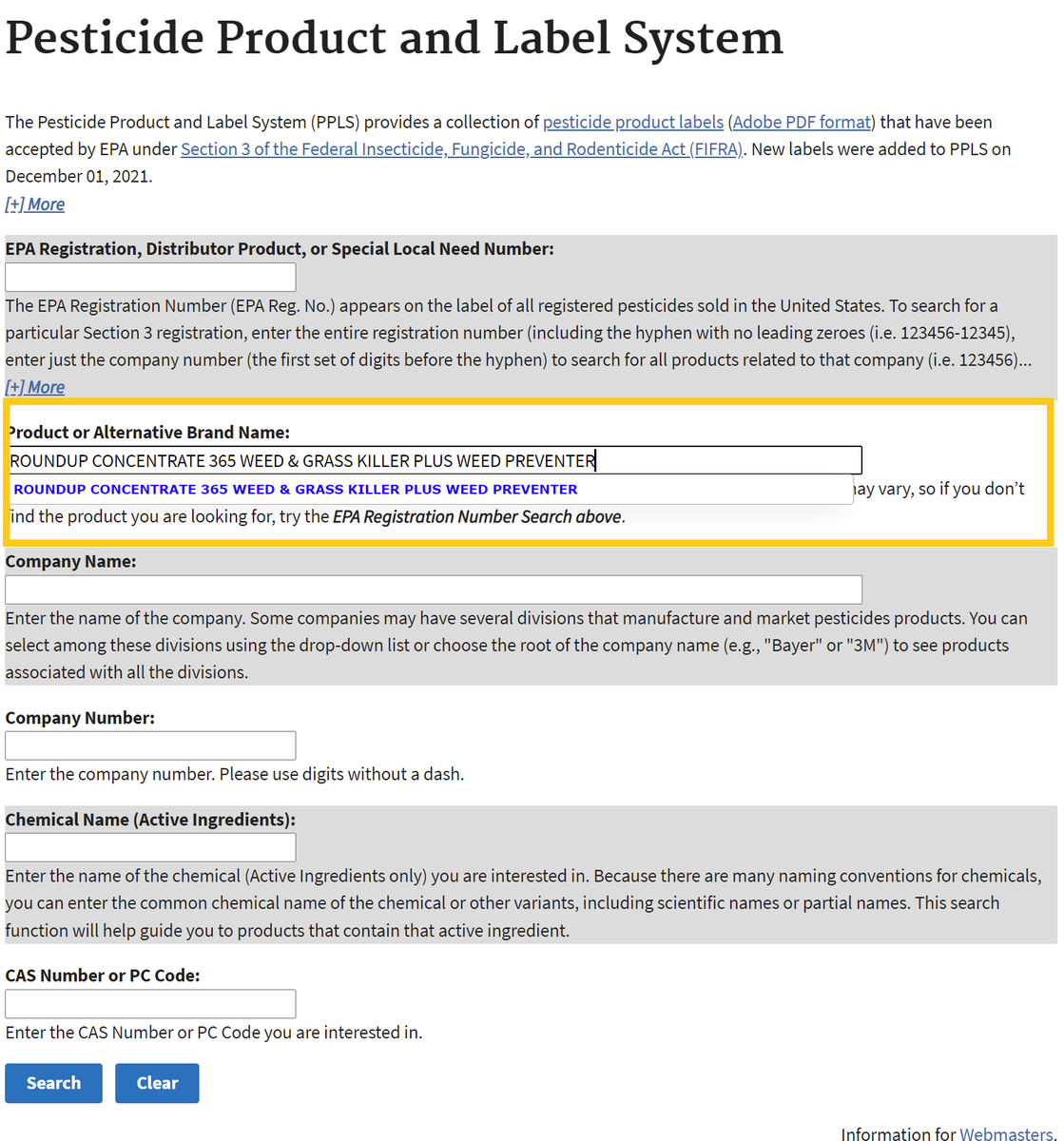
- After searching, click on the chemical ingredients tab or the link for the most recent label to find Active Ingredients.
Chemical List Label List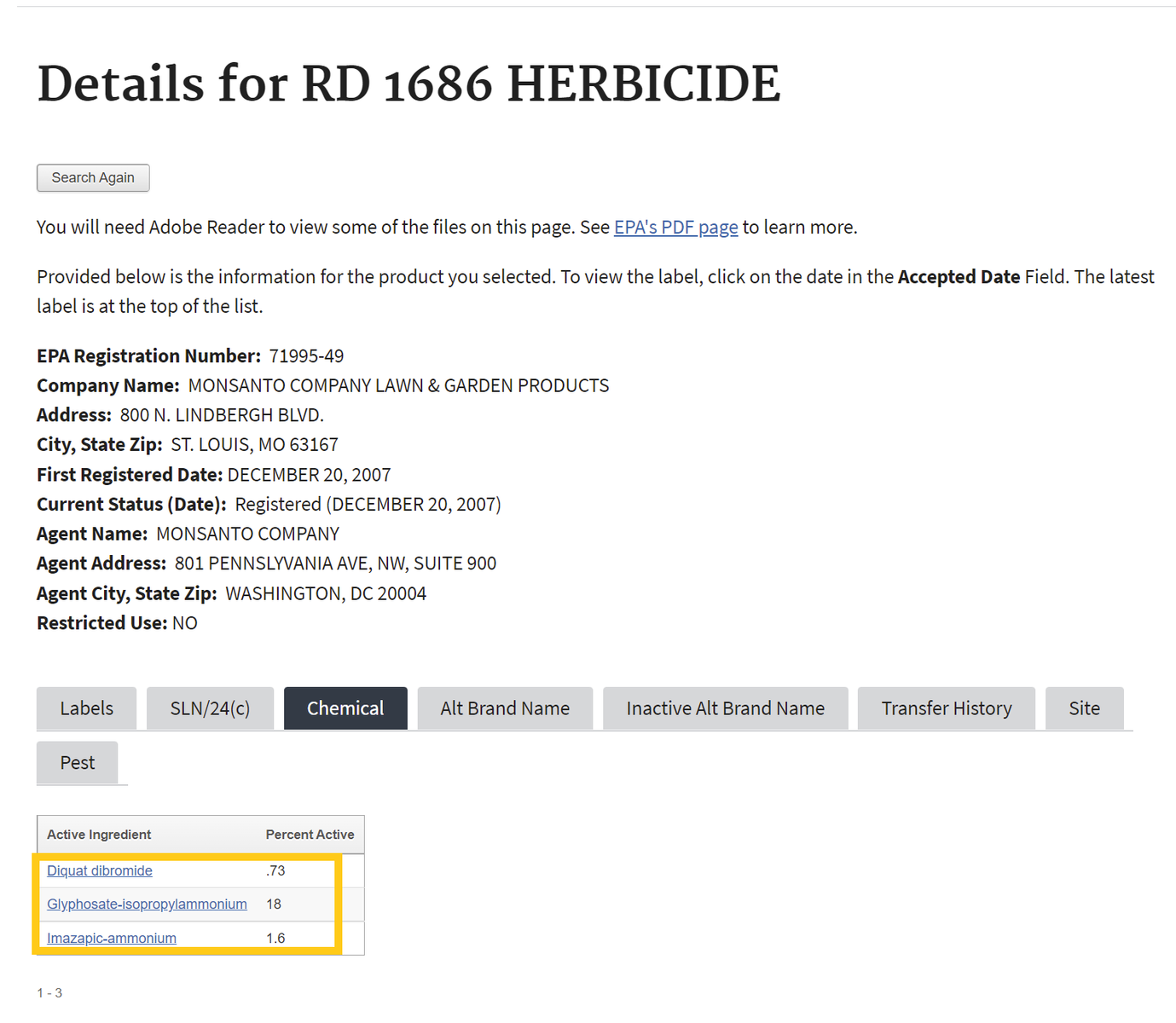
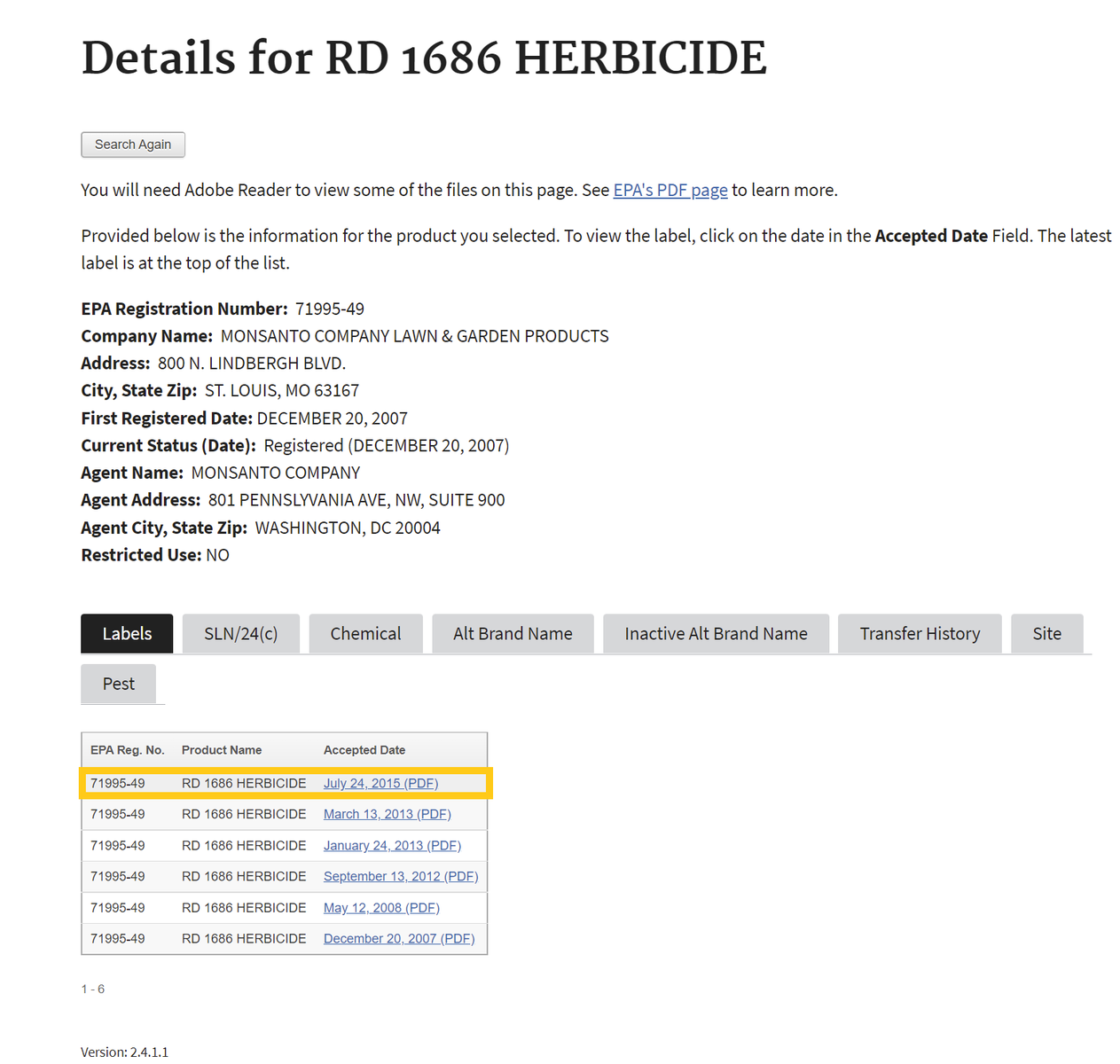
If one selects the chemical ingredients tab, skip to Step 4 . If not, proceed to step number 3 - To find the active ingredient(s) on the label, search for the page in the document containing the date of registration. Usually, the active ingredients section occurs within the first few pages of the label document.
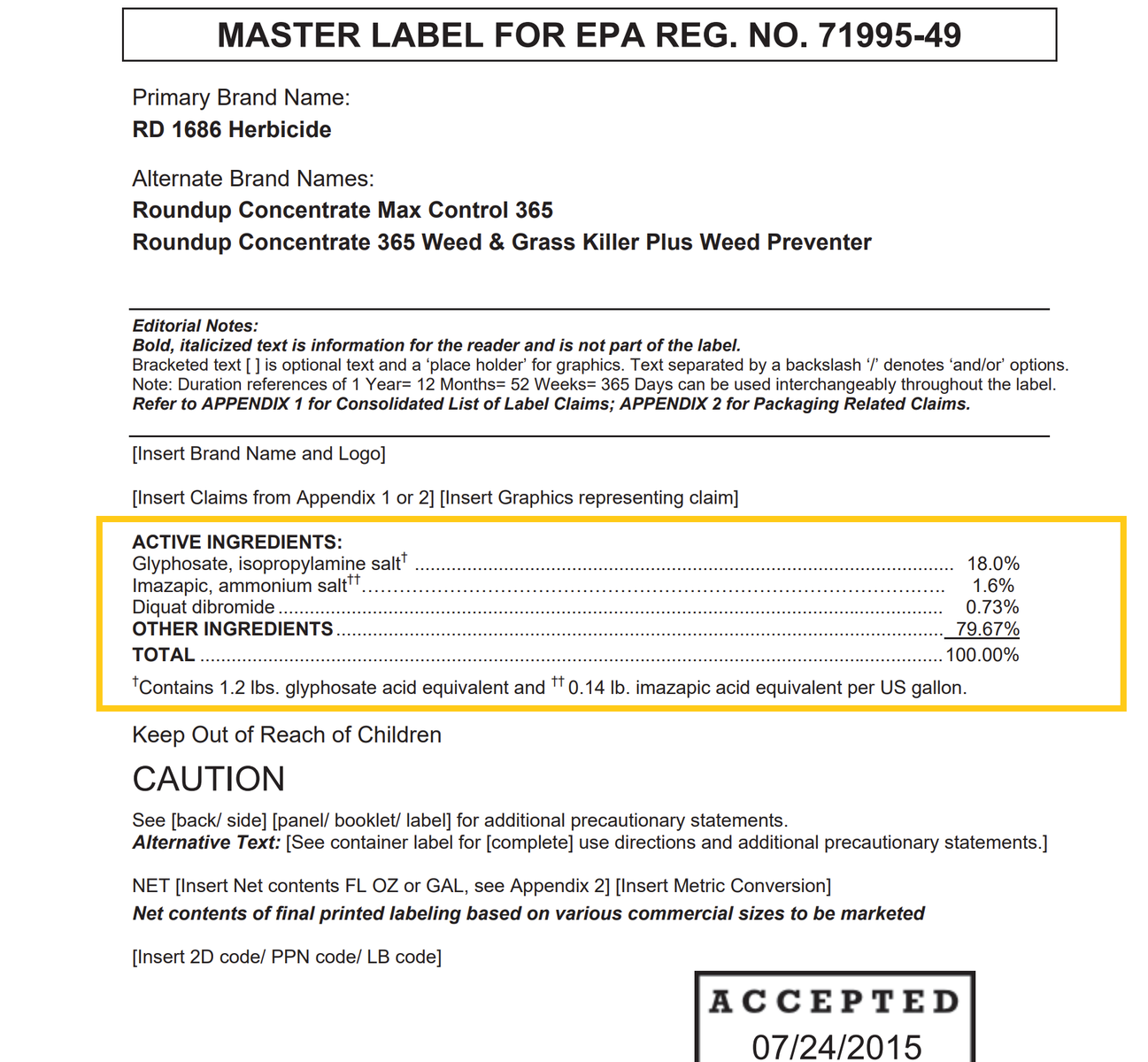
- Return to the Beyond Pesticides Gateway and search for the active ingredient name in the yellow box to the right or from the list below.
Picloram
General Information
- Fact Sheet: Picloram.pdf
- Product Names:
- Chemical Class: Pyridine compound herbicide
- Uses: Control of deeply rooted herbaceous weeds and woody plants in rights-of-way, forestry, rangelands, pastures, and small grain crops.
- Alternatives: Least-Toxic invasive weed managment, Organic agriculture
- Beyond Pesticides rating: Toxic
Health and Environmental Effects
- Cancer: Not documented
- Endocrine Disruption: Not documented
- Reproductive Effects: Yes (7)
- Neurotoxicity: Not documented
- Kidney/Liver Damage: Yes (11)
- Sensitizer/ Irritant: Yes (8)
- Birth/Developmental: Not documented
- Detected in Groundwater: Yes (8)
- Potential Leacher: Yes (8)
- Toxic to Birds: Not documented
- Toxic to Fish/Aquatic Organisms: Yes (8)
- Toxic to Bees: Not documented
Additional Information
- Regulatory Status:
- EPA Reregistration Eligibility Decision (RED) signed (3/1995)
- Supporting information:
- The Safer Choice (Beyond Pesticides)
- Montana's War on Weeds (Beyond Pesticides)
- NCAP Picloram Factsheet (Northwest Coalition for Alternatives to Pesticides)
- PAN Pesticides Database:Picloram (Pesticide Action Network)
- Studies:
- Persistence of triclopyr, dicamba, and picloram in the environment following aerial spraying for control of dense pine invasion. Rolando, C.A. et al. (2023) Persistence of Triclopyr, dicamba, and Picloram in the environment following aerial spraying for control of dense pine invasion, Invasive Plant Science and Management. Available at: https://www.cambridge.org/core/journals/invasive-plant-science-and-management/article/persistence-of-triclopyr-dicamba-and-picloram-in-the-environment-following-aerial-spraying-for-control-of-dense-pine-invasion/EC888894C5B7A927AD5E5A3E0C06CD8D.
- Immune response of Brazilian farmers exposed to multiple pesticides . Jacobsen-Pereira, C.H. et al. (2020) ‘Immune response of Brazilian farmers exposed to multiple pesticides’, Ecotoxicology and Environmental Safety, 202, p. 110912. doi:10.1016/j.ecoenv.2020.110912.








.png)
